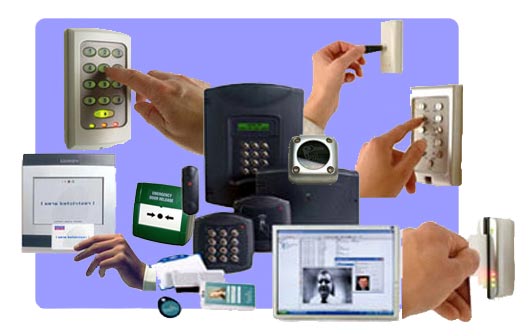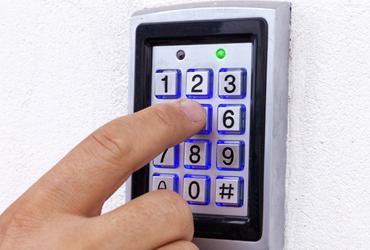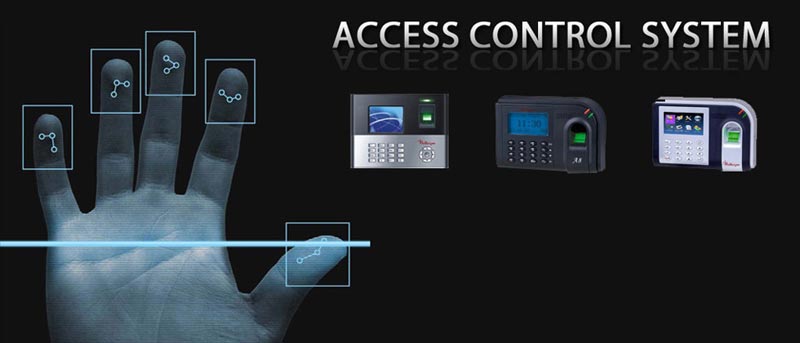Access Control System
Access control is a security technique that can be used to regulate who or what can view or use resources in a computing environment. There are two main types of access control: physical and logical. Physical access control limits access to campuses, buildings, rooms and physical IT assets. Logical access limits connections to computer networks, system files and data.
The four main categories of access control are:
- Mandatory access control
- Discretionary access control
- Role-based access control
- Rule-based access control
Access control systems perform authorization identification, authentication, access approval, and accountability of entities through login credentials including passwords, personal identification numbers (PINs), biometric scans, and physical or electronic keys.
Camera System
Bullet Security
Cameras Bullet security cameras are a type video surveillance camera that are typically small and shaped like a rifle bullet shell or lipstick case. Smaller bullet cameras are typically the diameter of a cigar, but they are shorter. Sometimes they are referred to as lipstick cameras. Bullet cameras can easily mount to ceilings or walls because most of them use a tri-axis type of mount. Not all bullet camera are small. Infrared bullet cameras tend to be larger in diameter to accommodate the additional space that their IR LEDs require. There are several types of bullet cameras on this page including analog CCTV cameras, AHD cameras, and TVI cameras. The AHD and TVI models are capable of 1080p HD resolution, but require an AHD or TVI compatible surveillance DVR.
Dome Security Cameras | Dome CCTV Cameras
Dome Security Cameras are named for their dome like shape. Dome cameras are commonly used in surveillance systems inside of homes, casinos, retail stores, and restaurants. This is because dome cameras are more fashionable and blend in very well to their surroundings. Because of their dome shape, it is difficult for someone to tell which direction the lens of a Dome Camera is actually aiming. When shopping for a Dome Camera, you should consider if you need night vision, in which case you should look at an infrared dome camera. If the area that you are installing your camera is susceptible to vandalism or tampering, you should consider installing a vandal dome camera. A varifocal dome cameragives you the flexibility to adjust the focal distance of the camera lens to exactly where you need it. CCTV Camera Pros offers combinations of all of the above mentioned types of Dome Cameras.
Outdoor Security Cameras | Outdoor CCTV Cameras
Outdoor Security Cameras are enclosed in weatherproof housings to protect the electronics of the camera from moisture and rain. This page contains various categories of outdoor CCTV cameras, such as bullet and dome camera styles.
Infrared Security Cameras | IR CCTV
Infrared security cameras have the capability to capture video in low light and no light (0 Lux) areas. Infrared cameras (IR) are sometimes referred to as IR cameras or "Night Vision Security Cameras" because of this. Infrared cameras have IR LEDs positioned around the outer edges of the camera lens which gives the camera its "Night Vision".
Infrared Cameras can capture acceptable video in total darkness and even better quality video in low light. Even a small amount of ambient light helps the overall night vision capability of IR cameras a lot. IR cameras are available in various body styles, such as dome and bullet styles. There are also specialty cameras such as license plate recognition (LPR cameras).
PTZ Security Cameras
PTZ Security Cameras allow you to control the pan, tilt and zoom operations of the camera lens remotely or through a surveillance DVR or Geovision DVR PC. PTZ Cameras have the ability to move up, down, right, left, and even zoom.
IP Security Cameras & IP Video Servers
IP security cameras and IP video servers are connected to an IP network using an Ethernet connection / CAT-5 cable. IP cameras and video servers have built in web servers so that the surveillance video that they transmit can be viewed directly from the camera over the Internet using a web browser, such as Internet Explorer. There is no need for a DVR or video capture card in order to broadcast the surveillance video over the Internet. IP video servers, also known as network video servers turn any CCTV camera (with a standard BNC output) into an IP based network camera (Ethernet output).











